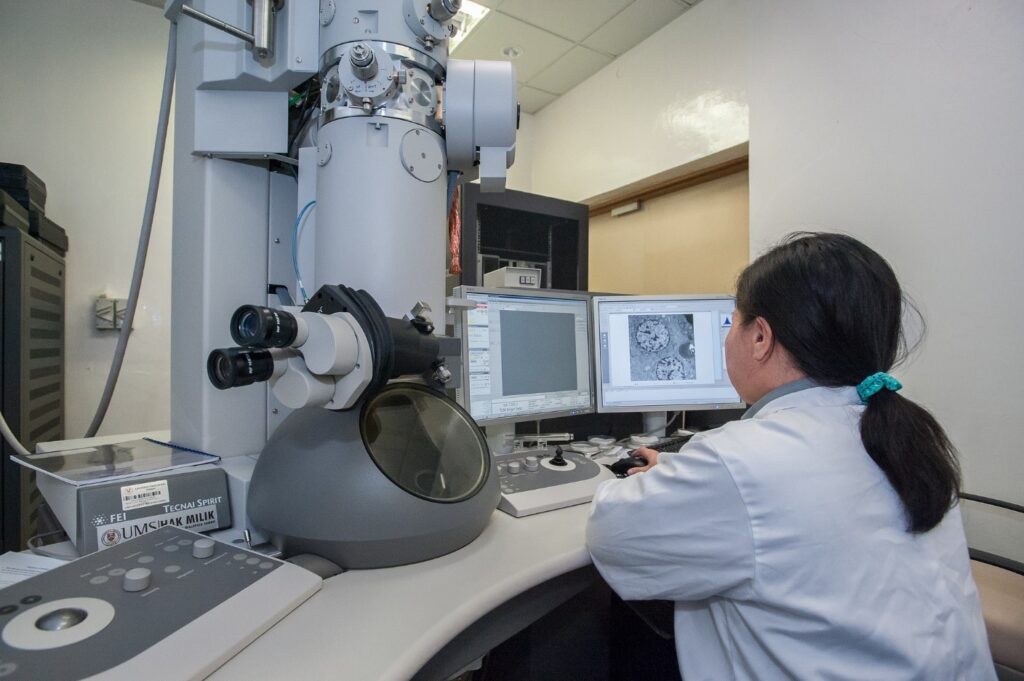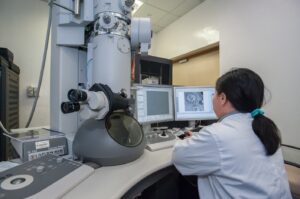Over the past few years, the use of artificial intelligence has increased tremendously due to the increasing known benefits of its applications. Artificial intelligence has played a role in developing and enhancing almost every field since it was introduced. Its uses include education, financial markets, banks, manufacturing industries, e-commerce, biotechnology, and healthcare.
What is Artificial Intelligence?
Artificial Intelligence, also referred to as AI, is a branch of computer sciences responsible for building smarter machines that can perform tasks that require human intelligence. AI was first discovered by the American scientist John McCarthy and his colleagues in 1956. This was coined during the Dartmouth Conference, before which the only work concerning artificial intelligence was the Turing test that had been proposed by Alan Turing. (1) (2)
The artificial intelligence system expresses certain key characteristics that enable it to mimic human cognition. (3) These include understanding, learning, reasoning, and empowering. Moreover, artificial intelligence systems cannot only read data but also process it and interpret it on a larger scale. It does not matter if the data is structured or unstructured, as the artificial intelligence system works by interpreting the different entities, their link to one another, the pattern they are forming, and helps propose a hypothesis. The AI system keeps developing and improving itself as it can keep collecting feedback and learning from the results.
Most population applications of Artificial Intelligence today include speech recognition, visual perception, translation from one language to another, and automated decision-making interfaces. (4)
Artificial Intelligence In Biotechnology And Healthcare
Ever since it was first introduced, there have been significant developments in artificial intelligence systems concerning biotechnology and healthcare systems. Past studies have shown AI to be effectively used in dermatology to design classification systems for diagnosing different skin cancers and lesions. (5) (6) An example of this is the Deep Convolutional Neural Network that Esteva and colleagues designed to classify diagnostic images into keratosis and keratinocyte carcinoma or benign nevus and malignant melanoma. (7)
Recently, artificial intelligence in the healthcare field has been used to advance the field of medical imaging, genomics, and all other biotechnology parameters which are involved in patient diagnosis, assessment of risk, and prognosis. Developments in these health parameters have allowed more accurate prevention, diagnosis, and treatment for various health cases.
Current Uses Of AI In Healthcare
Precision Medicine
Precision medicine is among the most common application of Artificial Intelligence in the healthcare sector. This system allows the doctor to determine what treatment options may be better suited for the patient based on their unique health condition. (8) A more complex version of this is known as the neural network. This specialized technology was initially introduced in the 1960s and has been used in the healthcare sector for several decades. The Neural Network can help the doctor determine whether the patient is at risk for a particular health condition after viewing variables like inputs and outputs.
Natural Language Processing
Natural Language Processing is another application of Artificial Intelligence in the healthcare sector. This system helps create, understand and categorize the various clinical documentation in the healthcare setup. This allows the doctor and clinical staff to understand and organize all the unstructured patient notes that have been gathered. It also allows them to prepare the required reports in a much shorter time and record the following patient interactions. Moreover, by decoding the unstructured data, AI can also help as a predictive tool for doctors. It allows the healthcare staff to make their medical decision and plan the patient’s treatment more efficiently. Natural Language processing can interpret the patient’s medical history in real-time and links the relevant signs and symptoms to the illness it is indicative of. This predictive analytic tool can allow the doctor to catch the disease much earlier and start treatment before it becomes more serious.
Physical Robots
Reports show that more than 200,000 physical robots are installed in different industries yearly. In healthcare, these are mainly used as surgical robots, which allow surgeries to be conducted with much more precision and with less time. This is because these robots are designed to allow the surgeon to see the surgical site more clearly, create error-free incisions that are much more precise, and stitch up the wounds in a much shorter time. (9) However, the surgeon still make the major decisions regarding the surgical procedure, while the robots assist them in carrying out those decisions more accurately. Most common surgeries that use Artificial intelligence include prostate surgery, gynecologic surgery, and surgeries concerning the head and neck.
Future of Artificial Intelligence
Artificial intelligence’s role in biotechnology and health is expected to keep growing in the coming years. Since machine learning is the application of AI, which has led to precision medicine and all its associated benefits in the healthcare field, this is expected to keep growing and developing. Even though the involvement of AI in diagnosis and treatment is not as common yet, it is expected to grow in the upcoming years. Since imaging analysis like pathology and radiology have seen rapid developments and increased utilization, the analysis of these imaging studies is expected to be done by a machine in the future. However, contrary to popular belief, the AI system will most likely not take over the role of clinicians in the near future; instead, it will make their work easier.
The Bottom Line
Artificial intelligence deals with the engineering and science of making machines intelligent. It does this through the introduction of certain algorithms which the machines can use and imitate human cognition. This has allowed AI to be used in different fields of work, among which Biotechnology and healthcare remain popular.
References
1.
McCarthy, J., Minsky, M. L., Rochester, N., & Shannon, C. E. (2006). A proposal for the dartmouth summer research project on artificial intelligence, august 31, 1955. AI magazine, 27(4), 12-12.
2.
Turing, A. M. (2009). Computing machinery and intelligence. In Parsing the turing test (pp. 23-65). Springer, Dordrecht.
3.
Kelly III, J. E., & Hamm, S. (2013). Smart machines: IBM’s Watson and the era of cognitive computing. Columbia University Press.
4.
Basu, K., Sinha, R., Ong, A., & Basu, T. (2020). Artificial Intelligence: How is It Changing Medical Sciences and Its Future?. Indian journal of dermatology, 65(5), 365–370. https://doi.org/10.4103/ijd.IJD_421_20
5.
Caffery, L. J., Clunie, D., Curiel-Lewandrowski, C., Malvehy, J., Soyer, H. P., & Halpern, A. C. (2018). Transforming Dermatologic Imaging for the Digital Era: Metadata and Standards. Journal of digital imaging, 31(4), 568–577. https://doi.org/10.1007/s10278-017-0045-8
6.
Li, C. X., Shen, C. B., Xue, K., Shen, X., Jing, Y., Wang, Z. Y., Xu, F., Meng, R. S., Yu, J. B., & Cui, Y. (2019). Artificial intelligence in dermatology: past, present, and future. Chinese medical journal, 132(17), 2017–2020. https://doi.org/10.1097/CM9.0000000000000372
7.
Esteva, A., Kuprel, B., Novoa, R. A., Ko, J., Swetter, S. M., Blau, H. M., & Thrun, S. (2017). Dermatologist-level classification of skin cancer with deep neural networks. Nature, 542(7639), 115–118. https://doi.org/10.1038/nature21056
8.
Lee, S. I., Celik, S., Logsdon, B. A., Lundberg, S. M., Martins, T. J., Oehler, V. G., Estey, E. H., Miller, C. P., Chien, S., Dai, J., Saxena, A., Blau, C. A., & Becker, P. S. (2018). A machine learning approach to integrate big data for precision medicine in acute myeloid leukemia. Nature communications, 9(1), 42. https://doi.org/10.1038/s41467-017-02465-5
9.
Davenport, T. H., & Glaser, J. (2002). Just-in-time delivery comes to knowledge management. Harvard business review, 80(7), 107–126.



